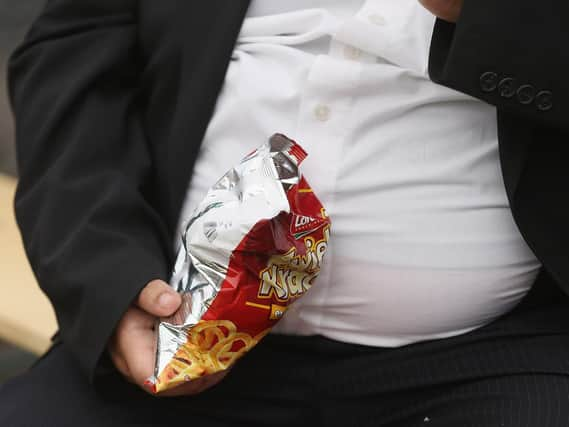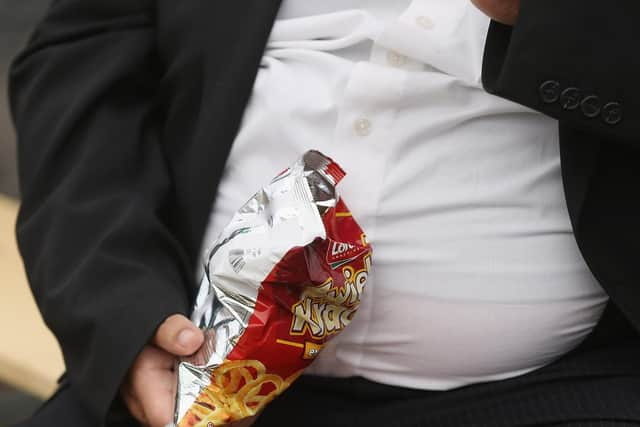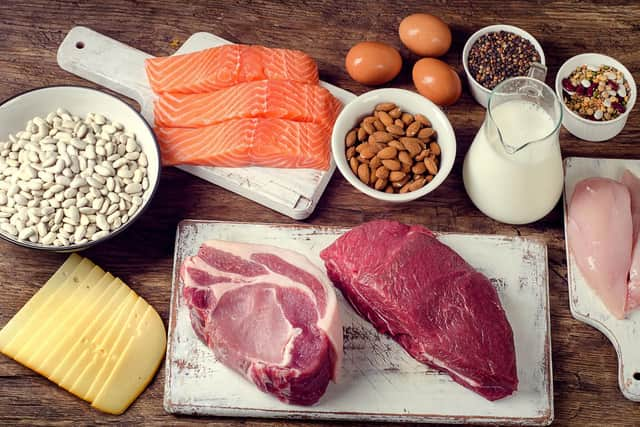New guide shows the perfect portion size for weight loss '“Â and you might be surprised


The British Nutrition Foundation has published a new guide called Find Your Balance to help people think about how healthy their lifestyle is.Â
Find Your Balance has been created with the Government's Eatwell guide in mind, which suggests how many portions of each food group you should be having every day.


Advertisement
Hide AdAdvertisement
Hide AdThe guide uses simple hand and spoon measurements to help us estimate appropriate portions, when cooking and serving food.
The BNF has packaged its portion size guidance into three free resources: a fridge poster which provides an overview of the advice; a booklet which expands on how to put the portion guidelines into practice; and a longer digital resource, which is downloadable, with advice on portion sizes for a wide variety of foods.Â
Bridget Benelam, Nutrition Communications Manager at the British Nutrition Foundation, said: 'More often than not, portion size is not something people give much thought to.
'The amount we put on our plate typically depends on the portion sizes we are used to consuming, how hungry we feel and how much is offered as a helping at a restaurant table or in a packet/ready meal.


Advertisement
Hide AdAdvertisement
Hide Ad'Nonetheless, in order to maintain a healthy weight we should ensure that our diets contain the right balance of foods, in sensible amounts. This isn't just about eating less; it's also about eating differently.'
Fruit and veg
For fruit and veg, you should be aiming for five or more - and there's really no need to worry too much about size, because the BNF says "you can have bigger portions of fruit and vegetables, as they're mostly low in calories, provided there's no fat or sugar added".
Yes, this means juice counts - but only one portion a day, and just a small glass of 150ml.
Starchy carbohydrates
It's recommended to eat around three to four portions of starchy carbs a day. Let's face it - no one can really be bothered to weigh out their food, so it's hard to actually know how much you're eating.
Advertisement
Hide AdAdvertisement
Hide AdThis is why the BNF has introduced a visual system, where you can use your hands to get a good idea of how much you should be eating. For lighter meals and breakfasts (under 200kcal), one portion of breakfast cereals or muesli tends to be about three handfuls, and porridge one and a half. Things like bread are already ready portioned, and two slices of medium-sized wholegrain will do the trick.
For main meals (over 200kcal), it recommends around two handfuls of things like dried pasta, rice and cous cous - for cooked versions, it's the amount of two hands cupped together. Fun tip for spaghetti - use your finger and thumb to measure a bunch the size of a £1 coin. Considering how oddly difficult it is to measure any type of pasta and not get it hugely wrong, this is pretty handy.
And, not strictly portion advice, but a tip to be more healthy - go for wholemeal versions where possible, and keep the skins on potatoes for that extra boost of fibre.
Protein
Even though protein might be Instagram's favourite food group, the NHS still recommends just two to three portions a day.
Advertisement
Hide AdAdvertisement
Hide AdChicken breasts should measure half the size of your hand (which means different-sized people should eat different-sized portions), and fish fillets can be between half the size of a hand and a whole hand. If you want vegetarian versions, go for around six tablespoons of lentils, beans and pulses, or two eggs.
For a protein-rich snack, eat the amount of nuts and seeds that will fit into your palm.
Dairy
The recommendation for dairy is also two to three portions a day. We don't advise measuring things like milk or yogurt with your hands - that would definitely end up being quite messy. It's worth looking up the BNF's individual recommendations - for example, half a glass of milk on cereal, a whole glass if you're drinking it, and four tablespoons of plain, low-fat yogurt are ideal.
It's easier to measure cheese, but a whole lot less fun when you see what the recommendations are. After a Christmas spent indulging in boards full of Camembert and Gouda, it might be time to start reconsidering how much you're eating. For hard styles (like Cheddar) and anything like Stilton or Brie, you should only be eating around the size of two thumbs, and for soft cheese, it's three teaspoons.
You can access the guide at nutrition.org.uk/findyourbalance.Â